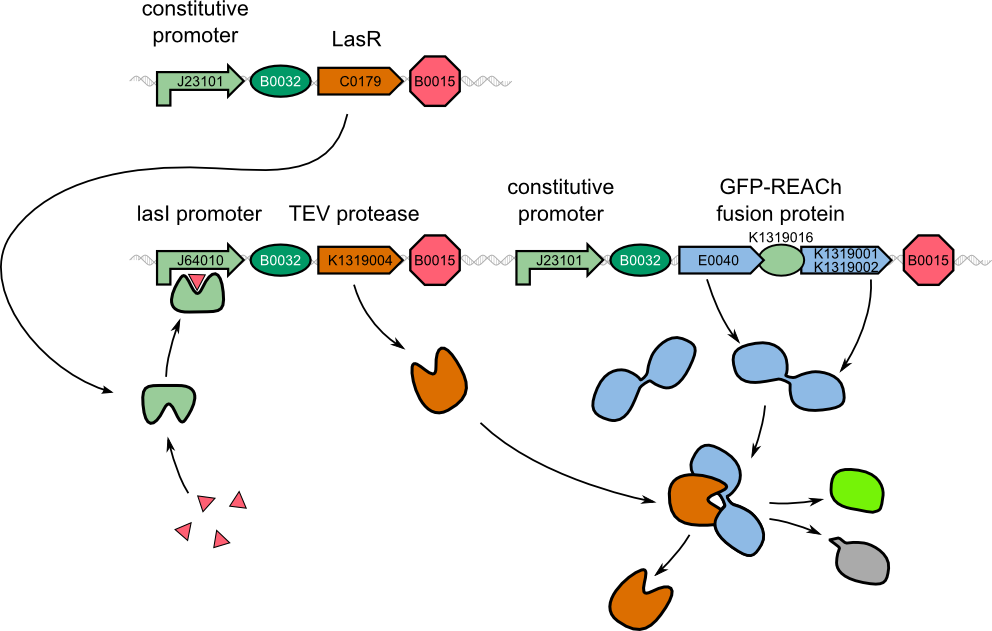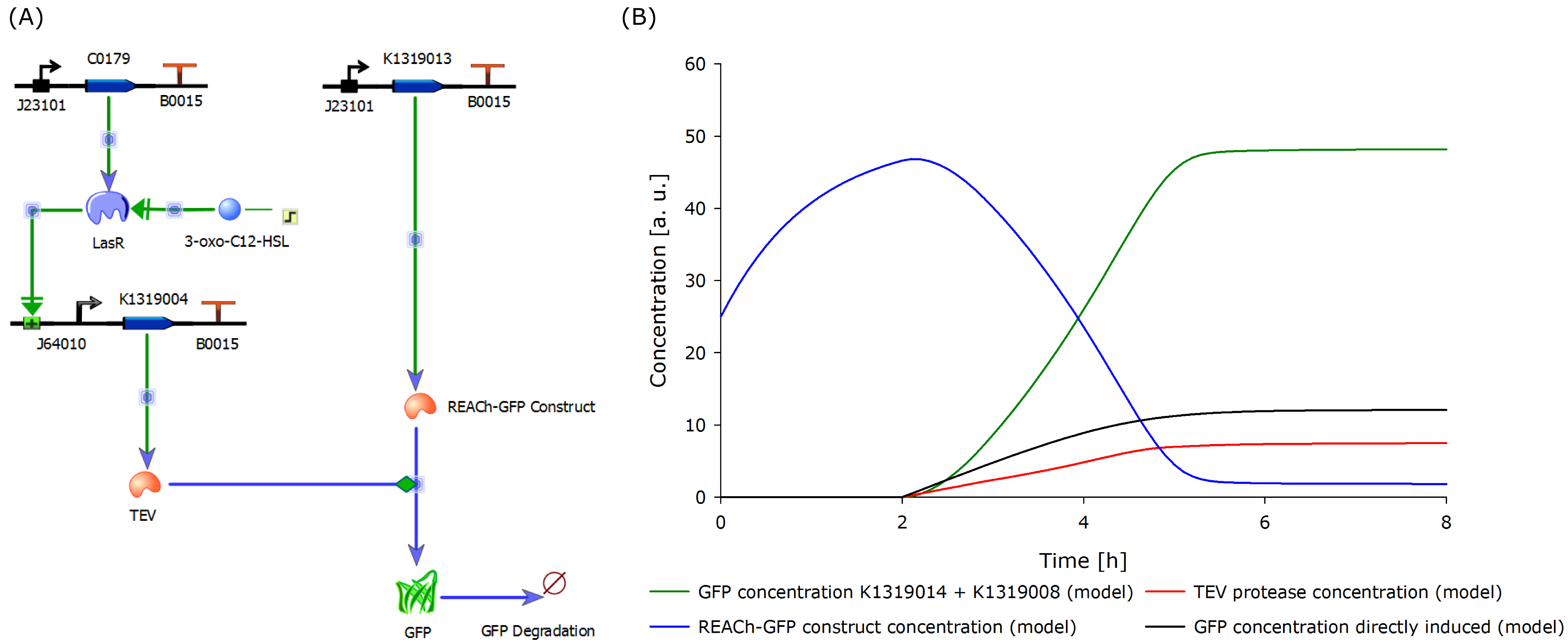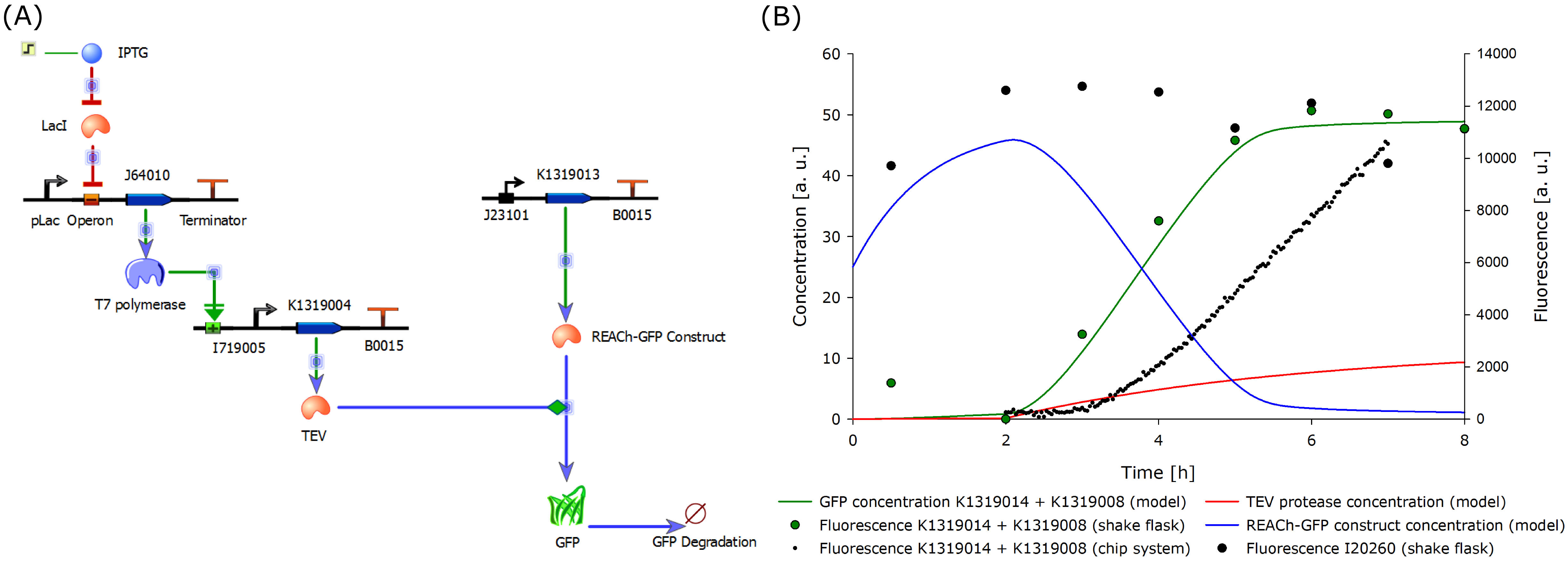Team:Aachen/Project/Model
From 2014.igem.org
(→Modeling) |
(→Modeling) |
||
| Line 6: | Line 6: | ||
=Modeling= | =Modeling= | ||
For our two-dimensional Biosensor, we thought of different methods to generate faster and stronger fluorescence responses from weak promotors. We were inspired by a recently published engineered ''dark quencher'', called REACh, that is able to extinguish the fluorescence of EGFP. In our system, we wanted a fusion protein of EGFP with the dark quencher to be cleaved by the very efficient TEV protease that would then be introduced behind the weak quorum sensing promotor. | For our two-dimensional Biosensor, we thought of different methods to generate faster and stronger fluorescence responses from weak promotors. We were inspired by a recently published engineered ''dark quencher'', called REACh, that is able to extinguish the fluorescence of EGFP. In our system, we wanted a fusion protein of EGFP with the dark quencher to be cleaved by the very efficient TEV protease that would then be introduced behind the weak quorum sensing promotor. | ||
| + | |||
<center> | <center> | ||
| - | {{Team:Aachen/Figure|Aachen 14-10-16 REACh approach iFG.png|align=center|title=An amplified reporter system|subtitle=Expression of the TEV protease is induced by 3-oxo-C<sub>12</sub>-HSL. The protease cleaves the GFP-REACh fusion protein to elicit a fluorescence response.|width= | + | {{Team:Aachen/Figure|Aachen 14-10-16 REACh approach iFG.png|align=center|title=An amplified reporter system|subtitle=Expression of the TEV protease is induced by 3-oxo-C<sub>12</sub>-HSL. The protease cleaves the GFP-REACh fusion protein to elicit a fluorescence response.|width=500px}} |
</center> | </center> | ||
Revision as of 21:41, 17 October 2014
|
|
 "
"


